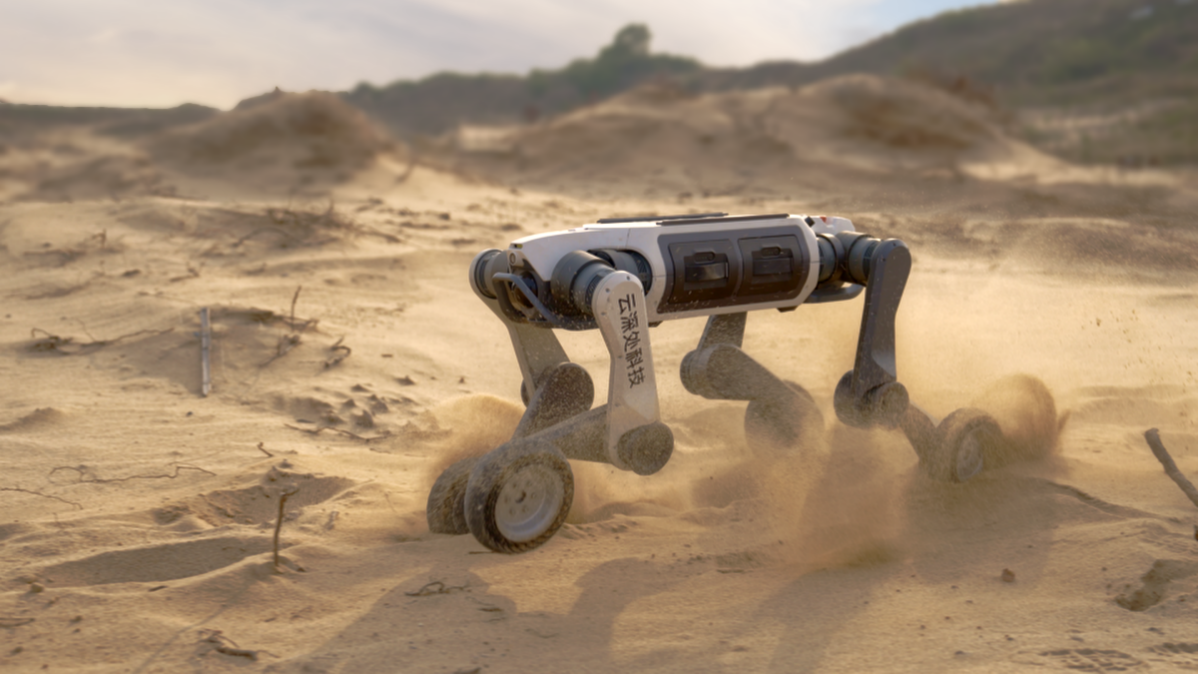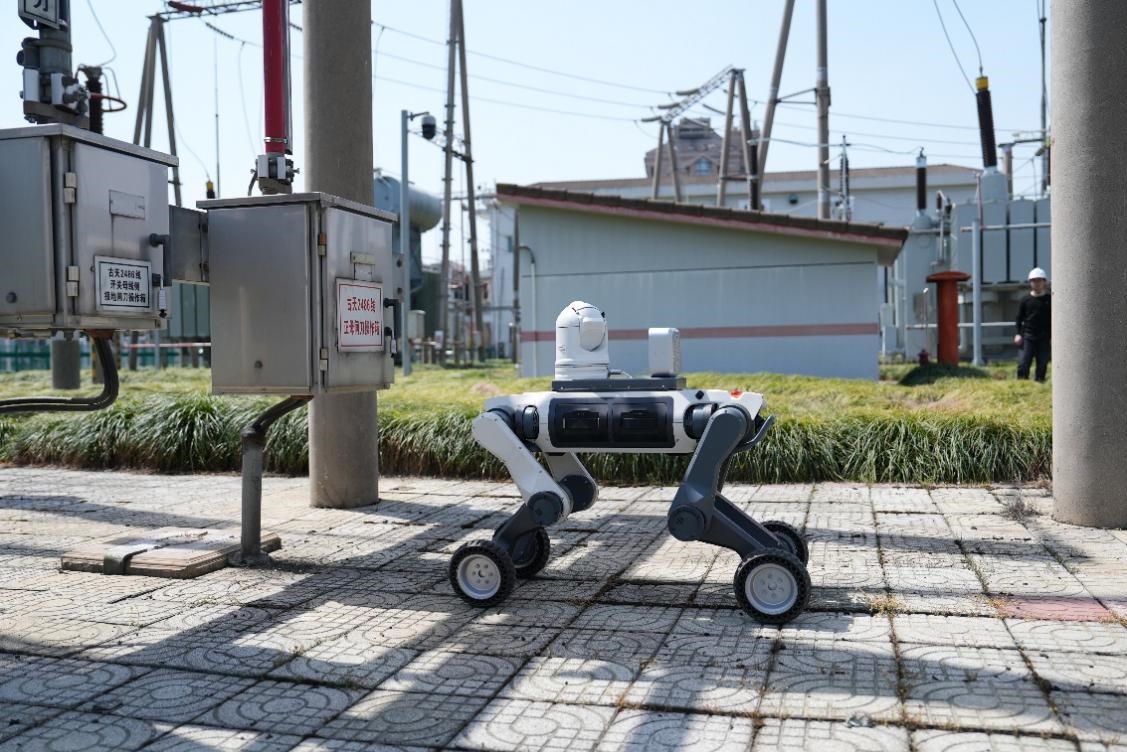HANGZHOU, CN / ACCESS Newswire / June 20, 2025 / As the crown jewel of the power industry, UHV substations (converter stations) contain the core function of ultra-high voltage power transmission. However, their complex environments and high-risk operational demands pose significant challenges to traditional inspection methods. The “three highs”-namely, high safety risks for manual inspections, highly complex equipment environments, and low efficiency in high-precision detection are becoming the increasingly prominent operational hurdles for facilities. Wheel-legged robots are poised to reshape the intelligent inspection paradigm for UHV substations, driving a new wave of digital transformation in the power sector.

LYNX M20 is a cutting-edge tool to empower industries
Amid the wave of digital transformation in the power industry, DEEP Robotics’ LYNX M20 wheel-legged robot is revolutionizing traditional inspection models with groundbreaking innovation. Combining the speed of wheeled robots with the agility of legged ones, it stands as the world’s first industry-grade wheel-legged robot specifically engineered for complex terrains and hazardous environments. LYNX M20 boasts all-terrain adaptability and industrial-grade intelligent configurations. Coupled with DEEP Robotics’ proprietary intelligent motion control algorithms, it demonstrates superior endurance, stability, and adaptability in extreme environments compared to traditional quadruped robots. It is actively reshaping inspection practices for UHV substations and converter stations, tackling the “three highs” in UHV operation and maintenance.
Highly protective robots can replace manual inspections in high-risk safety scenarios.
When abnormalities occur in UHV substation (converter station) equipment – such as abnormal oil chromatography in converter transformers, abnormal pressure in open-air switches, SF6 gas decomposition byproducts in GIS equipment, erratic equipment discharges, or equipment fires – personnel often need to don bulky protective gear for special inspections or handling, resulting in low efficiency and extremely high risks. LYNX M20 with its IP66 protection rating and wide operating temperature range (-20°C to 55°C), can enter the core fault zones of live equipment. Outfitted with dual-spectrum pan-tilt cameras and other tools, it performs tasks such as pressure reading on open-air high-voltage switchgear, partial discharge detection, switch status recognition, insulator contamination inspection, on-site meter reading, and valve operation – significantly reducing manual intervention and enhancing personnel safety.

LYNX M20 for complex terrains and hazardous environments
For nighttime operations and extreme weather conditions such as heavy rain, hail, and sandstorms, LYNX M20 equipped with bidirectional fill light system and LiDAR integration can achieve equipment meter recognition in dark environments. Featuring autonomous charging (optional) and hot-swappable quick battery replacement capabilities, it enables continuous operation during severe weather conditions.
The unique wheel-leg design enables access to the “maze-like” structures of UHV substations.
The densely distributed equipment foundations, cable trenches, and various pipelines in UHV substations (converter stations) form a “maze-like” structure. Particularly in areas such as the grating floor inside converter transformer BOX-INs, valve water cooling tower zones, unpaved surfaces in AC/DC filter fields, and valve hall inspection walkways -exceeding the capabilities of wheeled robots and ordinary quadruped robots – LYNX M20 can flexibly navigate through 50cm-wide cable trenches and climb high equipment platforms by switching between “front-elbow-rear-knee” and “full-elbow” dual configurations. With its LiDAR-enabled 360°×90° omnidirectional obstacle avoidance and precise positioning, it covers blind spots unreachable by traditional inspection vehicles. Meanwhile, LYNX M20 with its exceptional mobility, overcomes the low inspection efficiency limitations of traditional wheeled robots and ordinary quadruped robots. Beyond its highly efficient movement capabilities, it can also perform tasks such as perimeter wall inspections and small animal deterrence.

Support high-precision mapping, navigation, and omnidirectional obstacle avoidance
In ultra-high voltage substations (converter stations) covering over 500 acres, multiple LYNX M20 may form autonomous coordinated clusters in the future: one unit performing gas leak detection in GIS rooms while another simultaneously monitors oil temperature in main transformer areas, significantly improving task response efficiency. This system could also potentially establish a dynamic maintenance formation combining “robot dogs + drones + fixed sensors” to conduct comprehensive equipment inspections from multiple dimensions, various perspectives, and all directions.
AI defect database learning and digital twins improve detection accuracy.
To meet the refined inspection requirements of UHV substations (converter stations), such as infrared temperature measurement and partial discharge detection, LYNX M20’s 15kg payload capacity supports professional equipment including dual-spectrum pan-tilt cameras and ultrasonic detectors. Its self-adjusting stable motion platform ensures detection accuracy exceeds 95%. The robot can autonomously complete equipment meter recognition, data collection, and infrared temperature measurement, achieving comprehensive inspection coverage of all critical station equipment. After data collection, recognition, processing and diagnosis, the system automatically generates inspection reports and predictive analysis. Maintenance personnel can view inspection data reports with one click in the control room backend, enabling timely identification of potential equipment faults.

LYNX M20 serves as an industry-grade robotic platform
Through AI defect database learning, LYNX M20 can compare equipment status with historical data in real-time to accurately identify potential hazards. Previously, in DEEP Robotics’ intelligent inspection project delivered to a booster station in Ningxia’s Gobi Desert unmanned area, the X30 robotic dog solution achieved an identification accuracy rate of 96.5%.
LYNX M20 wheel-legged robot, with its excellent perception fusion, highly adaptable structure, and intelligent motion control, has truly become an intelligent mobile platform for complex terrains and high-risk environments. It represents an evolution of inspection robots and is reshaping the intelligent inspection paradigm for UHV substations (converter stations). In the 2025 key work points for the intelligent operation and maintenance industry chain, State Grid has proposed new directional benchmarks for robot applications in the power industry. The innovative impact of intelligent robot mobile platforms in the power sector will provide solid momentum for the industry’s high-quality development.
Company:DEEP Robotics
Contact:Vera Huang
Email:[email protected]
Website: https://www.deeprobotics.cn/en
SOURCE: DEEP Robotics














